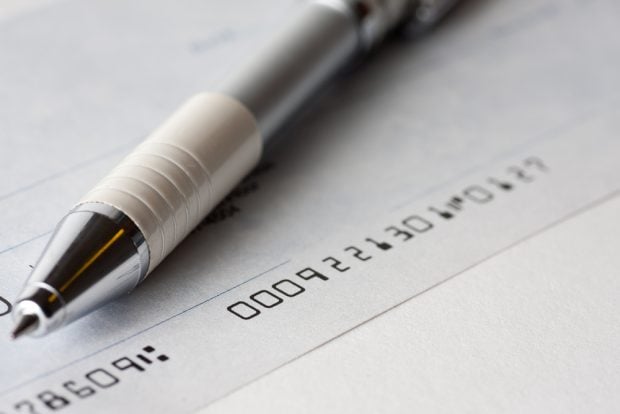 Check fraud remains a big problem for CUs. (Source: Shutterstock)
Check fraud remains a big problem for CUs. (Source: Shutterstock)
It may seem counterintuitive in the digital age, but good-old paper checks have regained popularity with fraudsters. Naturally, there's a new twist on this time-tested form of fraud, as criminals always find ways to make modern methods work to their advantage.
Though check-writing has been on the decline overall, there are still a significant number of Americans who find value in check-writing. The Federal Reserve Payments Study showed the number of check payments in 2021 as 11.2 billion, and, the average value of check payments had increased to $2,430. With effective new schemes, cybercriminals have found ways to make check fraud more profitable than ever – meaning preventative efforts are worth even more to credit unions and their members.
Recommended For You
Why Is Check Fraud Rising Again?
For all the upsides of digital banking, the fact that human verification measures have been reduced creates an opportunity for fraudsters to exploit. The physical review of a check allows for an opportunity to look for telltales of fraud, including missing security features – like the signature line, which on most checks is microscopic writing that fake checks often fail to replicate – as well as evidence that a check has been washed and rewritten.
It's not just how checks are deposited that is driving a resurgence in check fraud, but the ability of criminals to source a massive volume of real checks along with unlawfully obtained information about account balances. Criminals are using various methods to steal real checks in transit through the U.S. Postal Service and re-sell them on the dark web. Sometimes, account statements accompany the check to show the amount of funds available, which increases the black-market value.
Finally, criminals have discovered it is far easier to establish drop accounts at credit unions than to attempt passing them at a check-cashing business. Particularly to stay in line with digital-first challengers, credit unions have worked hard to make the account opening process simple. As a result, the identity verification standards for new accounts are typically very low, making it easy for scammers to set up drop accounts at credit unions. Then, remote deposit makes a subsequently deposited altered or forged check harder to detect. Altogether, criminals never have to leave the comfort of their home to pull off a scalable check fraud scheme.
Helping Members Avoid Check Fraud Losses
Like all fraud mitigation efforts, keeping members more protected in the face of a growing number of check schemes involves several facets. The good news is that mitigation efforts can be cost-effective and pragmatic with a combination of technology, processes and education.
Implement financial education about check fraud. Because the rise in check fraud seems to defy modern trends, it's fair to think that many credit union members are unaware or assume that fraudsters have moved on to other scams. Educating members about check fraud risks helps engage them on the topic so they can be more vigilant and selective about when they use checks. It also shows them your credit union is engaged in monitoring the threat landscape and looking out for their best interests.
Inform younger members about the risks of "mule accounts." It's not just legacy check users that are getting swept up in check fraud schemes. Young members are being targeted on instant messaging platforms with "mule account" content, where they are promised a quick buck for allowing their accounts to be used to deposit checks.
Impose initial limits for remote deposits on new accounts. For new accounts, credit unions might consider imposing initial limits on remote deposits until trust has been established. There might be low remote deposit limits for new members at first that are raised over time with increased validation. These limits will most likely seem reasonable to the average new member but will be enough to discourage a criminal.
Encourage electronic payment adoption. Being more aware of the risks may help members migrate to other payment options offered by your credit union. Target your most prolific check-writers with information and education about electronic payment services, including instructions for how to set up auto pay for regular bills or contact member services for help. Intercepting bill payments is a favorite tactic of criminals.
Offer positive pay or check fraud protection tools for check-writers. Offer members who plan to continue using checks greater peace of mind through options to enroll in positive pay or check fraud protection. These services decrease the chance of fraud and its potential financial impact. Positive pay will flag suspicious checks for review and third-party check fraud protection services often work directly with check fraud victims on restoration.
Integrate check-verification technology. Third-party processors have become more proficient in detecting bad checks. Integrating their check verification technology into the credit union's check deposit process can filter out a meaningful volume of fraudulent activity.
While these steps are simple, they're effective risk management measures that can make a credit union and its members harder to target. Credit unions can't stop fraudsters from attempting to cash bad checks, but they can maintain members' trust by continuing the fight against fraud in all its reimagined forms.
 Al Pascual
Al Pascual Al Pascual Senior Principal and Enterprise Solutions Lead TransUnion Chicago
© 2025 ALM Global, LLC, All Rights Reserved. Request academic re-use from www.copyright.com. All other uses, submit a request to [email protected]. For more information visit Asset & Logo Licensing.






